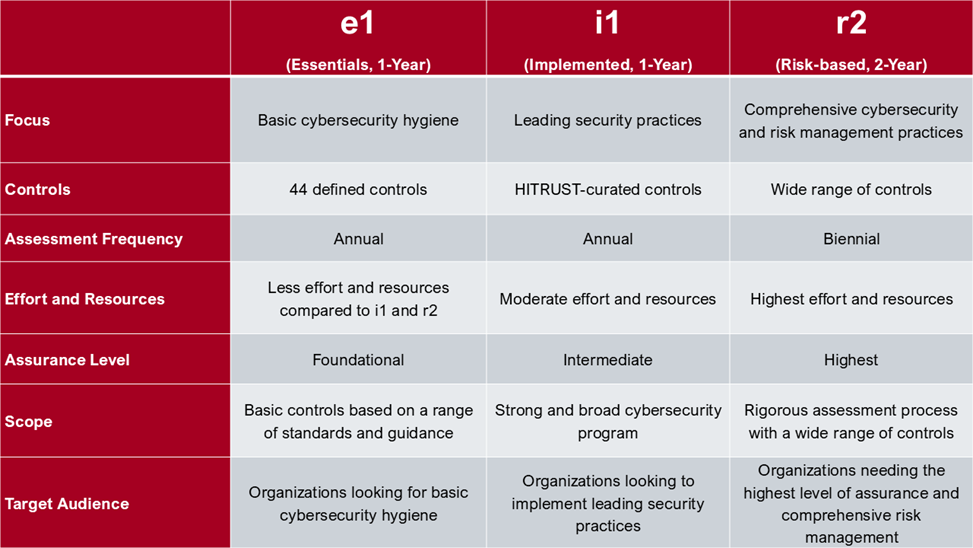HITRUST 11.5 Just got Released...
HITRUST CSF v11.5.0 Update: Key Changes and Strategic Benefits

What is HITRUST?
The HITRUST Cyber Security Framework (CSF) is a Risk Management Framework which helps organizations protect sensitive information (i.e., PII, PHI) by leveraging industry standards and authoritative sources relevant to the information security and privacy industry.
The HITRUST CSF harmonizes existing controls and requirements from standards, regulations, business and third-party requirements and offers the following:
What are the HITRUST certification levels?
HITRUST offers 3 certification levels which are designed to provide varying degrees of assurance based on an organization's needs and risk profile and include:
These levels build on each other, with increasing rigor and comprehensiveness as you move from e1 to r2. Each level is designed to meet different organizational needs and risk profiles, ensuring that there is a suitable certification option for every organization.
The following matrix highlights the key differences between the HITRUST certification levels e1, i1, and r2:
Table 1 HITRUST Certification levels comparison

How do I prepare for a HITRUST certification?
Preparing for a HITRUST certification involves several key steps to ensure your organization meets the rigorous standards set by the HITRUST CSF framework. Here are some guidelines to help you get ready:

Figure 1 HITRUST preparation steps
By following these steps and leveraging the resources available within your organization and from HITRUST, you can effectively prepare for the HITRUST certification and ensure that your organization meets the highest standards of security and compliance.
How do I register for a HITRUST assessment?
The primary steps to register for a HITRUST assessment include:
By following these steps and leveraging the resources available within your organization and from HITRUST, you can effectively register for a HITRUST assessment and ensure that your organization meets the highest standards of security and compliance.
For more information get the service brief or schedule a complementary call to answer your questions:
HITRUST CSF v11.5.0 Update: Key Changes and Strategic Benefits
In today's data-sensitive world, especially within healthcare and an increasing number of other regulated industries, robust cybersecurity isn't just...
In today's interconnected world, demonstrating robust cybersecurity and data protection is no longer optional—it's a fundamental requirement for...
In today's business landscape, Artificial Intelligence is no longer a futuristic concept but a powerful engine for innovation and efficiency. AI...